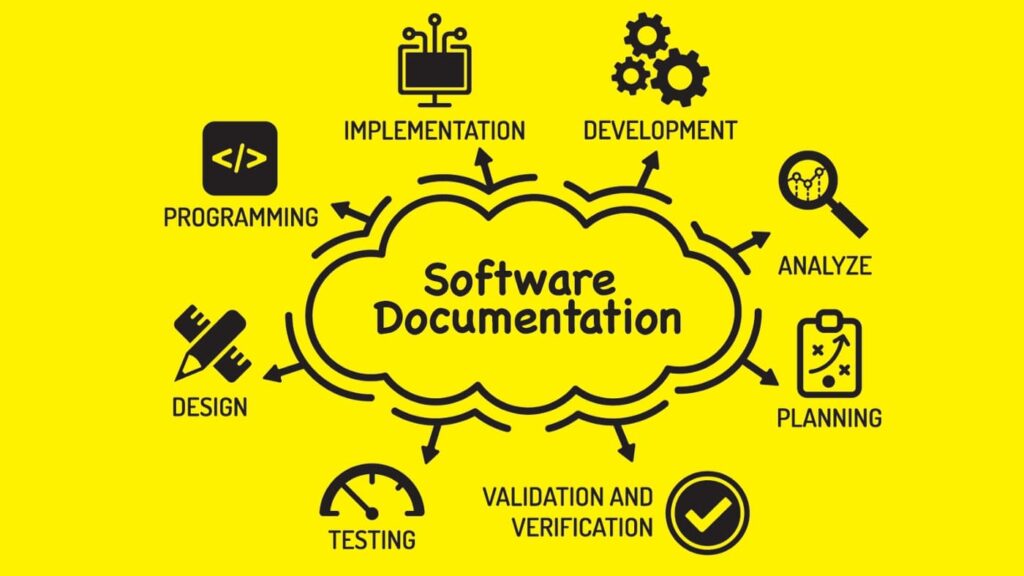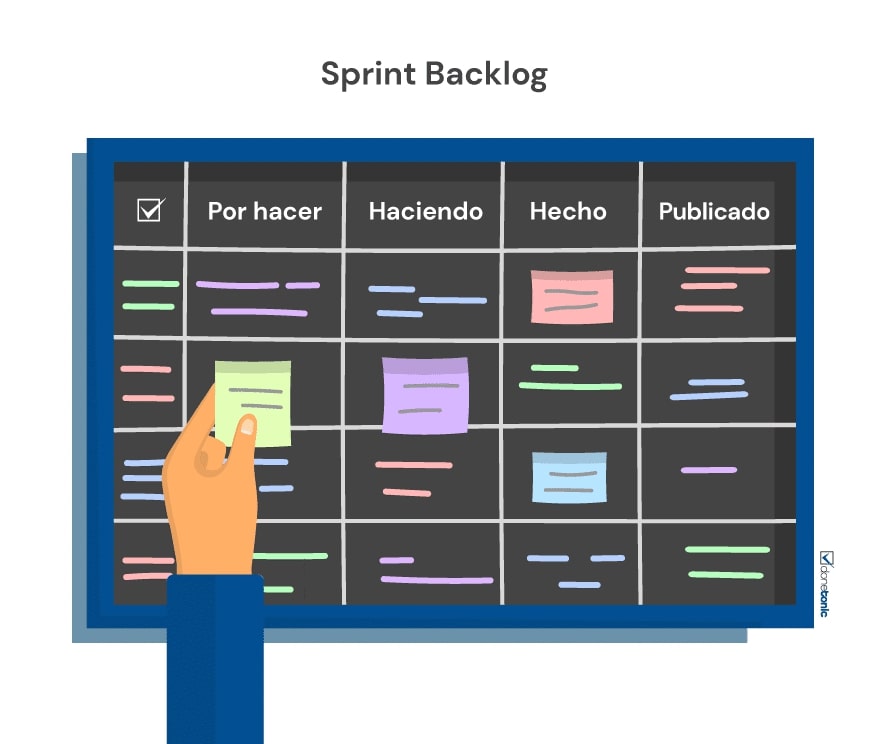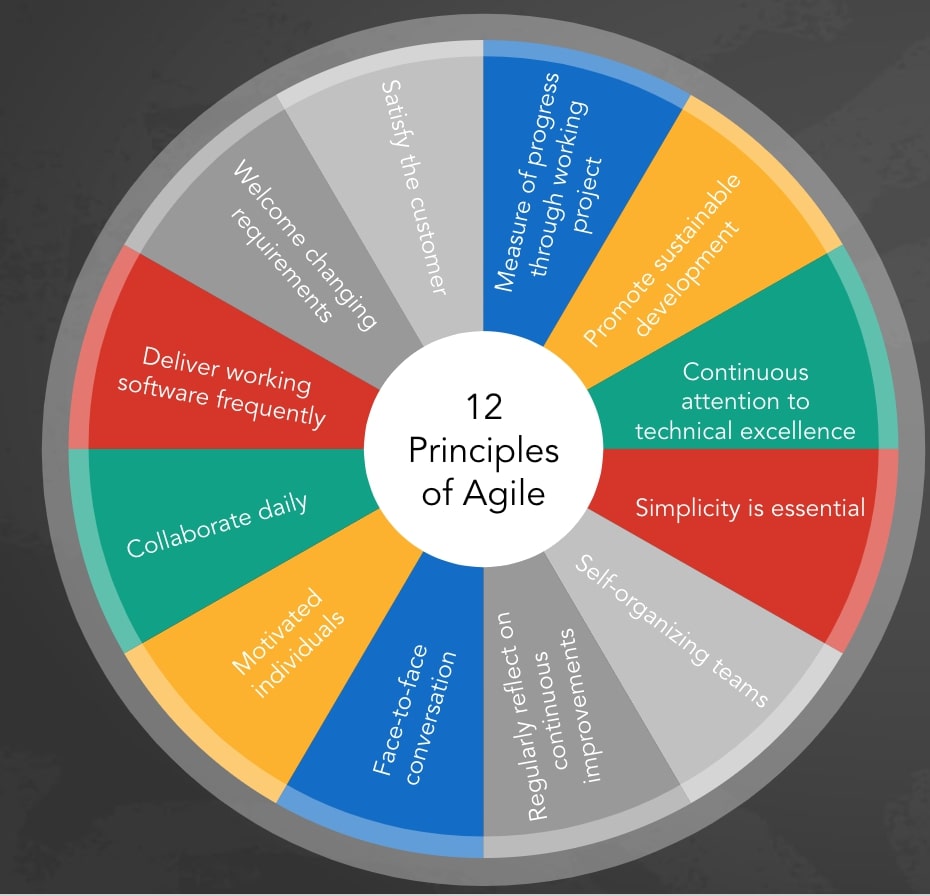Since its publication, the Agile Manifesto has revolutionized how people develop software and brought immense benefits to organizations around the globe.
This article explains the Agile Manifesto, its history, importance, and its 12 principles.
What is the Agile Manifesto?
The Agile Manifesto is a document that defines twelve principles of agile software development and four agile values.
Seventeen software professionals from various technical backgrounds developed the Agile Manifesto with an aim to guide software development teams to meet customer expectations. So far, it has had a significant effect on software industries worldwide, eliminating the cons of traditional software development practices and producing high-quality software solutions.
Here are brief descriptions of the four values of the Manifesto for Agile Software:
1. Individuals and Interactions Over Processes and Tools
Team engagement and communication are more valuable than heavyweight software development processes and tools.
Besides, there is no point in having all the tools and processes without effective interaction between individuals.
A team of motivated professionals finds a better solution for these projects than processes and tools. Therefore, you must encourage individuals to have regular conversations to formulate their ideas and thoughts to develop better software.
Nowadays, following this best practice has helped break down the silos between cross-functional teams and formulate DevOps teams with an understanding of all product areas.
2. Working Software Over Comprehensive Documentation
Extensive documentation is a tradition you must avoid as it wastes your time and hinders faster software delivery.

Credits: Medium
Therefore, focus more on the development and faster delivery of software than overdoing documentation.
This means that working software is more important than perfect software.
3. Customer Collaboration Over Contract Negotiation
Traditional software development was more product-centric, with mismatches between customer expectations and delivery.
In contrast, the agile manifesto encourages building customer-centric products through continuous collaboration with customers throughout the whole development lifecycle.
4. Responding to Changes Over Following a Plan
Agile encourages frequent changes to the current plans based on the identified changing customer expectations.
Unlike in the traditional model, the product plan is now a dynamic and up-to-date document that reflects the most recent changes prioritized and planned for each iteration.

Credits: Done Tonic
Doing so allows for easier alignment between the allocated stories and prioritized customer expectations.
The History of the Agile Manifesto
The history of the Agile Manifesto dates back to February 2001, when a team of software practitioners gathered at a resort in Utah.
They were there to discuss the current status of the software development process, expressing their own opinions, ideas, and thoughts. They all agreed that software management processes at the time were no longer viable.
There was a dire need for a better solution than the documentation-driven traditional software development approach.
These practitioners and other software professionals applied various agile principles and practices before this gathering. Together, they formed a group called “The Agile Alliance,” bringing out the Agile Manifesto, the document describing the four values and 12 principles of Agile software development.
Principles of the Agile Manifesto
Apart from these four values, the Agile Manifesto also defines the 12 best practices you need to use in modern Agile development. Let’s get to know what these principles are.

- The highest priority is to satisfy the customer through early and continuous delivery of valuable software: Impress your customers with early iterative software delivery rather than shipping a large product with a long delivery cycle. Make the time between product initiation and launch count. Deliver the minimum viable product (MVP) first and improve it with customer feedback. This enables the continuous delivery of valuable software that meets changing customer needs.
- Welcome changing requirements, even at the latter stages of development. Agile processes harness change for the customer’s competitive advantage: Traditional software development methods did not support changing customer requirements. They forced teams to identify all the requirements at the beginning, document them, and develop them until there was a product with the static customer needs regardless of the new changes. The Agile Manifesto discourages such static documentation and incorporates the changing requirements of customers, even in the later stages.
- Deliver working software frequently, from a couple of weeks to a couple of months, with a preference for the shorter timescale: In an agile setting, developers must deliver software fast. Break down the product development into releasable parts and launch them within short time frames like sprints or iterations of 2-4 weeks. These frequent deliveries help ship the complete product faster than developing it all at once, like in the Waterfall method. What’s more, this approach also enables you to test and validate each feature through several testing cycles.
- Business people and developers must work together daily throughout the project: The Agile manifesto encourages engagement between the product and developers from the beginning of product planning. Regular communication between business people and developers helps fill the gaps between what developers see and the actual expectations of the customers. Therefore, this continuous engagement is critical for high-quality software delivery.
- Develop projects around motivated individuals. Offer them the environment and support they need, and trust them to get the job done: Any organization benefits from motivated people who have the right skill set and want to get the job done in the right manner. The responsibility of an organization is to support these individuals, making them an inspiration to others. In addition, you need to set the goals and responsibilities for the individuals before starting the project without micromanaging them.
- Face-to-face conversation is the most efficient and effective method of conveying information to and within a development team: While written communication methods like chat and email are mandatory these days, this principle encourages developers and other stakeholders to have real conversations about the product requirements, issues, and escalations. Face-to-face communication helps the team get to know the real person and understand their feelings and emotions, which is critical for an effective and collaborative work experience.
- Working software is the primary measure of progress: Delivering software with complete features no longer indicates progress. This requires detailed documentation stating all the requirements in the beginning. The Agile Manifesto encourages us not to believe that software must be perfect in every delivery. Instead, it measures success by producing working software.
- Agile processes promote sustainable development. The sponsors, developers, and users must maintain a constant pace: Meeting deadlines is tough when both your team and customers have high expectations. The Agile Manifesto encourages teams to commit to achieving goals in each iteration based on the available capacity. It enables the team to balance their work and personal lives without burning out. Teams need to sync up with other teams to know what they should commit to, aligning their work dependencies to keep up with the pace.
- Continuous attention to technical excellence and good design enhances agility: It is essential to maintain technical excellence as much as possible to avoid issues, conflicts and breaks in the software while developing shippable features in each iteration. For example, never hesitate to allocate time if you think your code needs enhancements or a research component. Both the product and the development team need to understand the technical debts they need to address.
- Simplicity; the art of maximizing the amount of work not done, is essential: You must master the art of simplifying tasks by focusing more on the most critical requirements that have the greatest impact on customers. It is essential to prioritize work to cut down on unnecessary work that has the least impact. However, keep in mind that this decision must align with the goals of the company.
- The best architecture, requirements, and designs emerge from self-organizing teams: Traditional approaches consisted of teams that lacked autonomy. Senior members made most of the decisions for the others to follow. The Agile Manifesto emphasizes that agile teams must operate with a high degree of autonomy. The whole team must contribute to making decisions, take control over their work, and have a sense of ownership of the product.
- The team reflects on how to become more effective at regular intervals and then tunes and adjusts its behavior: The last principle reminds us that Agile is not only about developing software faster. You also need to take time to reflect on your learning experience at regular intervals. Have retrospectives to discuss what went well, what went wrong, and what the team must do to improve its processes. Retrospections help teams prepare for their next ventures, avoid past mistakes, and incorporate what they learned from previous projects.
The importance of the Agile Manifesto
Two decades after its launch, organizations worldwide embrace the principles and values of the Agile Manifesto in their software projects and have gained many long-term benefits so far. It teaches us important concepts that every team within an organization needs to practice for faster and high-quality software delivery.
Each principle defines what they need to follow to become more productive while maintaining a work-life balance. Agile is not about working hard, but about how to work smarter.
Stakeholders, including developers, are aware that customer satisfaction is the top-most priority, and these principles and values make it easier to realize that.